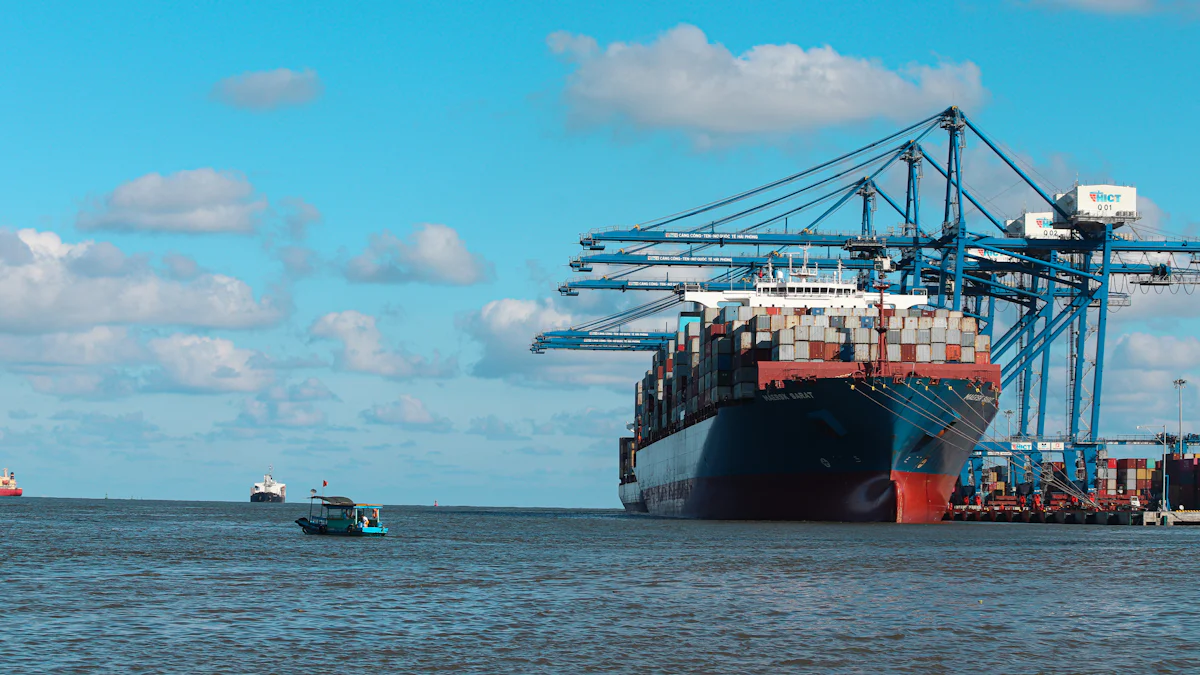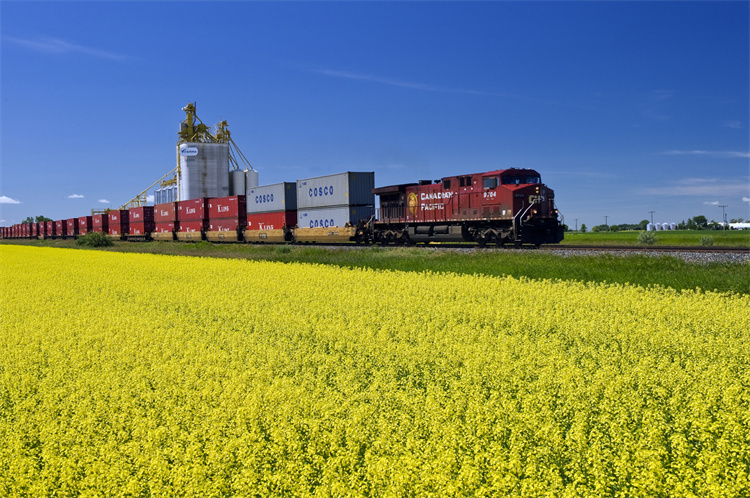Vietnam's supply chain leaders reflect on challenges

Vietnam has become a key player in the global supply chain. The country has shown remarkable growth in logistics, ranking 39th out of 160 countries in the World Bank's Logistics Performance Index in 2018. Vietnam's total goods trade value reached $683 billion last year, highlighting its significant role in international trade. Understanding the challenges faced by supply chain leaders is crucial. Many leaders struggle with demand forecasting and operational slowdowns. Addressing these issues is vital for maintaining Vietnam's competitive edge in the supply chain landscape.
Vietnam's Role in the Global Supply Chain

Vietnam has become a major player in the global supply chain. The country has shown impressive growth as a manufacturing hub. Many factors contribute to this success.
Emergence as a Manufacturing Hub
Factors Contributing to Vietnam's Growth
Vietnam's strategic location serves as a gateway to other Asian markets. The government invests heavily in infrastructure, allocating around 6% of GDP to improvements. This investment is more than twice the average of other ASEAN nations. Competitive labor costs attract businesses seeking cost-effective production. Vietnam also offers a stable political environment, which appeals to foreign investors. These elements create an ideal setting for manufacturing growth.
Comparison with Other Asian Countries
Vietnam's logistics costs are higher than those in Thailand, China, and Malaysia. These costs are 6 to 12 percent higher, affecting competitiveness. Despite this, Vietnam's focus on infrastructure investment sets it apart. The country's port infrastructure quality ranks lower than China, India, Thailand, and Sri Lanka. However, ongoing improvements aim to close this gap. Vietnam's commitment to enhancing its supply chain infrastructure remains strong.
Importance in Supply Chain Management
Vietnam plays a crucial role in supply chain management. The country specializes in key industries and products.
Key Industries and Products
Vietnam excels in electronics, textiles, and agriculture. The electronics industry includes major brands like Samsung and LG. Textiles remain a staple, with Vietnam being a top exporter of garments. Agriculture contributes significantly, with rice and coffee leading exports. These industries highlight Vietnam's diverse supply chain capabilities.
Role of JUSDA in Supply Chain Solutions
JUSDA, a leading supply chain solutions provider, operates in Vietnam. The company offers end-to-end logistics services. JUSDA helps businesses optimize their supply chain operations. The company's presence enhances Vietnam's supply chain efficiency. JUSDA's expertise supports Vietnam's growing role in the global market.
Vietnam's emergence as a manufacturing hub showcases its potential. The country's strategic investments and industry strengths bolster its supply chain position. As Vietnam continues to evolve, its impact on the global supply chain will likely grow.
Key Challenges Identified by Supply Chain Leaders

Vietnam's supply chain leaders face a range of challenges that impact their operations. Demand forecasting and operational slowdowns stand out as significant hurdles. These issues require immediate attention to ensure smooth supply chain management.
Demand Forecasting Issues
Demand forecasting remains a top concern for many supply chain professionals in Vietnam. Accurate predictions are crucial for maintaining efficient inventory levels. Many leaders struggle with this aspect, leading to inefficiencies.
Impact on Inventory Management
Inaccurate demand forecasts can wreak havoc on inventory management. Overstocking becomes a common problem when forecasts overestimate demand. This situation ties up capital and increases storage costs. Underestimating demand leads to stockouts, causing missed sales opportunities and customer dissatisfaction. Both scenarios disrupt the flow of goods within the supply chain.
Strategies to Improve Forecasting Accuracy
Emerging technologies offer promising solutions for improving demand forecasting accuracy. Advanced data analytics and machine learning tools can analyze vast amounts of data quickly. These technologies help identify patterns and trends that human analysts might miss. Implementing tighter controls and interconnected systems enhances the overall forecasting process. Supply chain leaders can leverage these tools to make more informed decisions and optimize their operations.
Operational Slowdowns
Operational slowdowns present another major challenge for Vietnam's supply chain leaders. These disruptions can occur due to various factors, affecting the entire supply chain network.
Causes of Slowdowns
Several factors contribute to operational slowdowns in Vietnam's supply chain. Inadequate infrastructure often leads to bottlenecks in transportation and logistics. Labor shortages further exacerbate the situation, reducing production capacity. Reliance on foreign suppliers can also introduce delays, especially during global disruptions. Each of these elements can slow down the supply chain, impacting overall efficiency.
Mitigation Strategies
Addressing operational slowdowns requires a multifaceted approach. Investing in infrastructure improvements can alleviate transportation challenges. Training programs can help bridge the labor gap by equipping workers with necessary skills. Diversifying supplier networks reduces dependency on foreign sources, minimizing risks. By implementing these strategies, supply chain leaders can enhance their resilience and maintain smooth operations.
Supply chain leaders in Vietnam face complex challenges that demand innovative solutions. By focusing on demand forecasting and addressing operational slowdowns, they can improve their supply chain performance. Embracing new technologies and strategies will be key to overcoming these obstacles and ensuring future success.
Broader Issues Affecting Vietnam's Supply Chain
Vietnam's supply chain faces several broader issues that impact its efficiency and reliability. These challenges require attention to ensure the country's continued growth as a global supply chain hub.
Infrastructure Inadequacies
Infrastructure plays a crucial role in the effectiveness of a supply chain. Vietnam's infrastructure inadequacies create significant hurdles for logistics and transportation.
Transportation and Logistics Challenges
Vietnam struggles with transportation and logistics challenges due to inadequate infrastructure. Roads and ports often face congestion, leading to delays in the movement of goods. High logistics costs arise from these inefficiencies, affecting the overall competitiveness of Vietnam's supply chain. Businesses experience increased operational expenses, which can deter foreign investment.
Government Initiatives for Improvement
The Vietnamese government recognizes the need for infrastructure improvements. Investments focus on upgrading roads, ports, and railways to enhance the supply chain network. The government allocates substantial funds to these projects, aiming to reduce bottlenecks and improve efficiency. These initiatives show promise in addressing the current infrastructure challenges.
Labor Shortages

Labor shortages present another significant issue for Vietnam's supply chain. The availability of skilled workers directly affects production capacity and efficiency.
Impact on Production Capacity
Labor shortages limit the production capacity of Vietnam's manufacturing sector. Companies struggle to meet demand due to insufficient workforce numbers. This situation leads to delays in order fulfillment and potential loss of business opportunities. The lack of skilled labor also impacts the quality of products, posing risks to the reputation of Vietnamese manufacturers.
Solutions to Address Labor Gaps
Addressing labor shortages requires strategic solutions. Training programs aim to equip workers with the necessary skills for modern manufacturing processes. Collaboration between educational institutions and industries helps align training with market needs. Additionally, attracting foreign talent can provide temporary relief to labor gaps. These efforts contribute to a more robust and capable workforce.
Reliance on Foreign Suppliers
Vietnam's supply chain heavily relies on foreign suppliers, particularly for raw materials. This dependency introduces risks and vulnerabilities.
Risks and Vulnerabilities
Reliance on foreign suppliers exposes Vietnam's supply chain to external risks. Geopolitical tensions and global disruptions can lead to raw material shortages. The COVID-19 pandemic highlighted these vulnerabilities, causing significant supply chain disruptions. Businesses face uncertainty and increased costs when foreign supply chains falter.
Strategies for Diversification
Diversification strategies can mitigate the risks associated with foreign supplier dependence. Encouraging local production of raw materials reduces reliance on imports. Establishing partnerships with multiple suppliers ensures a steady flow of resources. These strategies enhance the resilience of Vietnam's supply chain against global uncertainties.
Vietnam's supply chain faces complex challenges that require comprehensive solutions. Addressing infrastructure inadequacies, labor shortages, and foreign supplier dependencies will strengthen the country's position in the global market. By focusing on these broader issues, Vietnam can continue to thrive as a key player in the supply chain landscape.
Implications and Future Outlook
The future of Vietnam's supply chain looks promising. Leaders in the industry see the need for advanced technologies. Automation and AI play a big role in this transformation. These tools help businesses streamline operations. Companies can reduce errors and improve efficiency with these technologies. Automation handles repetitive tasks, freeing up human resources. AI provides insights into data, helping leaders make informed decisions.
Need for Advanced Technologies
Role of Automation and AI
Automation and AI are game-changers for the supply chain. Machines handle tasks that humans used to do. This shift speeds up processes and cuts costs. AI analyzes data to predict trends. Leaders use this information to stay ahead of the competition. The supply chain becomes more efficient with these tools.

Examples of Technological Innovations
Many companies in Vietnam adopt new technologies. Robotics in warehouses speeds up order fulfillment. Drones deliver goods quickly and efficiently. Blockchain technology ensures transparency in transactions. These innovations make the supply chain more reliable. Businesses that embrace these changes see positive results.
Importance of Innovation and Adaptability
Innovation keeps the supply chain competitive. Companies must adapt to changing market conditions. Those that fail to innovate fall behind. Leaders focus on strategies to maintain competitiveness. Staying flexible helps businesses navigate challenges.
Strategies for Maintaining Competitiveness
Businesses develop strategies to stay competitive. Investing in technology is one approach. Training employees to use new tools is another. Companies also focus on building strong relationships with suppliers. These strategies help businesses thrive in a competitive market.
Future Trends in Supply Chain Management
The future of supply chain management looks exciting. Experts predict more use of AI and automation. Sustainability becomes a key focus for many companies. Leaders look for ways to reduce their carbon footprint. The supply chain continues to evolve with these trends.
Vietnam's supply chain faces challenges but also opportunities. Embracing technology and innovation is crucial for success. Leaders who adapt to changes will thrive in the global market. The future holds great potential for Vietnam's supply chain industry.
Vietnam's supply chain leaders must tackle challenges head-on to stay competitive. Addressing issues like demand forecasting and operational slowdowns is crucial. Innovation and adaptability play a vital role in overcoming these obstacles. Companies that embrace change will thrive. Investing in technology and infrastructure is essential for future success. Advanced technologies like AI and blockchain can transform operations. These tools offer efficiency and cost reduction. Vietnam's supply chain can achieve a competitive edge by leveraging these innovations. Continuous improvement and strategic investments will ensure long-term growth and resilience in the global market.
See Also
Overcoming Global Supply Chain Expansion Hurdles
Expert Guidance for Automotive Supply Chain Obstacles
Boosting Supply Chains Through Cloud Tech Innovations
Revolutionizing Industries with Cloud Supply Chain Solutions
